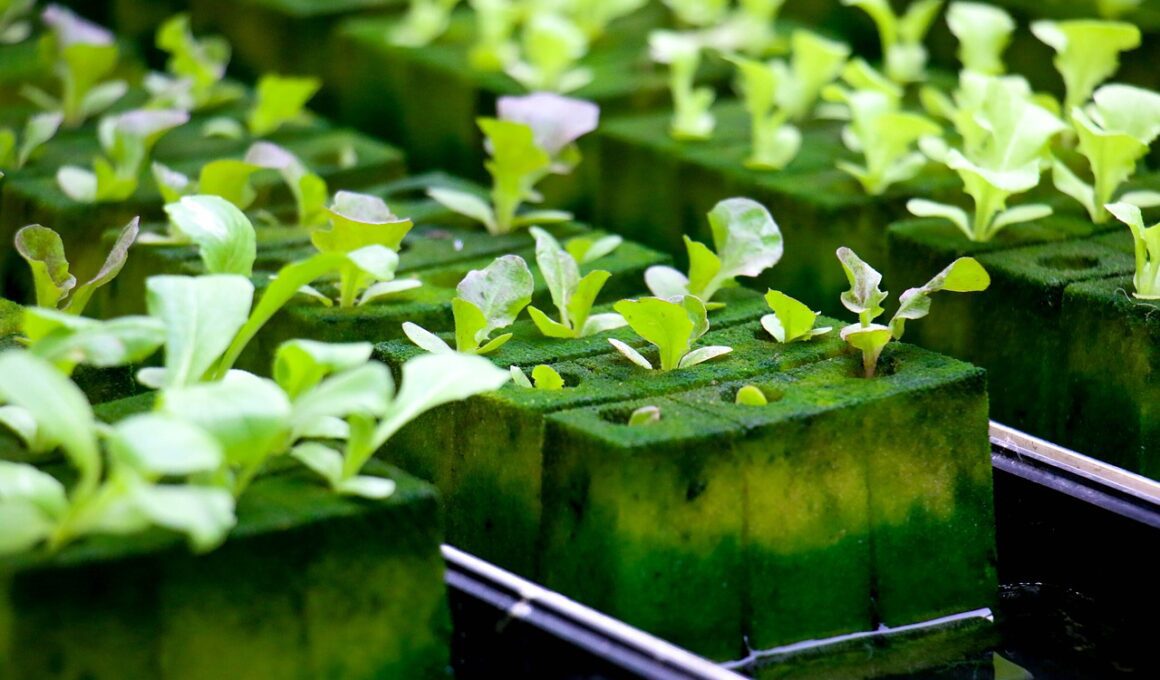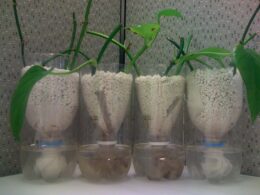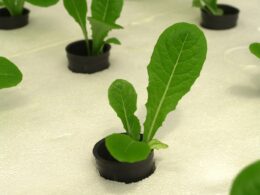Do you love munching on juicy hydroponic tomatoes? These tomatoes, grown in a nutrient-rich solution instead of soil, are known for their freshness and flavor. However, have you ever wondered why you should avoid refrigerating them?
It turns out that refrigeration can actually harm the quality of hydroponic tomatoes, making them less tasty and nutritious. Hydroponic tomato growth is a delicate process that requires just the right balance of nutrients, light, and water. When grown in optimal conditions, these tomatoes can reach their full potential, with a burst of flavor and nutrients that will keep you coming back for more.
However, once they are harvested, they are susceptible to damage from temperature changes, which can lead to a loss of flavor and texture. So, if you want to enjoy the full benefits of hydroponic tomatoes, it’s important to understand how refrigeration can affect them and what you can do to keep them fresh.
Understanding Hydroponic Tomato Growth
So, when growing hydroponic tomatoes, you’ll notice that they require a unique environment and different nutrients than traditional soil-grown tomatoes.
Hydroponic tomato varieties are grown in a soilless environment, where the roots are suspended in a nutrient-rich solution. This allows for better control over the plant’s growth and nutrient uptake in hydroponic systems.
The nutrient uptake in hydroponic systems is different from soil-grown plants. In hydroponics, the nutrients are dissolved in water and delivered directly to the plant’s roots. This means that the plant can absorb the nutrients more efficiently, resulting in faster growth and higher yields. However, this also means that the plant is more susceptible to nutrient imbalances and deficiencies, which can affect the plant’s overall health and productivity.
Because of the unique environment and nutrient uptake in hydroponic systems, refrigerating hydroponic tomatoes can actually harm the plant’s growth and quality. Cold temperatures can cause the plant to go into shock, which can stunt its growth and reduce its yield.
Additionally, refrigeration can affect the flavor and texture of the tomato, making it less desirable for consumption. Therefore, it’s best to store hydroponic tomatoes at room temperature and consume them within a few days of harvesting for optimal freshness and flavor.
The Effects of Refrigeration
Refrigerating tomatoes grown hydroponically can have a significant impact on their taste and texture. Cold temperatures can cause the fruit to lose their natural sweetness and become mealy, making them less enjoyable to eat.
Hydroponic tomatoes are typically grown in a controlled environment, where the temperature is regulated to optimize their growth. Therefore, exposing them to cold temperatures can disrupt their delicate balance and alter their overall quality.
If you want to keep your hydroponic tomatoes fresh and flavorful, there are alternatives to refrigeration. Storing them at room temperature is the best option, as it allows them to ripen naturally and retain their natural sweetness. You can also store them in a cool, dark place, away from direct sunlight and heat. Another option is to use a breathable mesh bag to store them, which will allow air to circulate and prevent them from becoming too moist.
In conclusion, refrigerating hydroponic tomatoes can have a negative impact on their taste and texture. The cold temperature can cause them to lose their natural sweetness and become mealy, making them less enjoyable to eat. If you want to keep your hydroponic tomatoes fresh and flavorful, it’s best to store them at room temperature or in a cool, dark place. By doing so, you’ll be able to enjoy the full flavor and texture of these delicious fruits.
Best Practices for Storing Hydroponic Tomatoes
To savor the full flavor and texture of your hydroponically grown tomatoes, it’s crucial to follow the best practices for storing them. Proper temperature and air circulation are two key factors to consider when storing hydroponic tomatoes. Here are some tips to keep in mind:
-
Keep them at room temperature: Hydroponic tomatoes are best stored at room temperature, between 60-70°F. Storing them in the refrigerator can cause the texture and flavor to deteriorate.
-
Allow for air circulation: Make sure to store your hydroponic tomatoes in a well-ventilated area. This will prevent moisture buildup and help keep them fresh.
-
Don’t wash them until ready to use: Washing hydroponic tomatoes before storing them can cause them to spoil faster. Wait until you’re ready to use them, then rinse them off with water.
By following these simple guidelines, you can ensure that your hydroponic tomatoes stay fresh and delicious.
Proper storage can go a long way in preserving their flavor and texture, and ultimately, enhancing your culinary experience.
So next time you pick up some hydroponic tomatoes, keep these tips in mind and enjoy!
Other Factors Affecting Hydroponic Tomato Quality
When it comes to hydroponic tomatoes, there are other factors that can affect their quality aside from storage. You should pay attention to the ripeness of the tomatoes at harvest, as this can greatly impact their flavor and texture.
Additionally, the quality of the nutrient solution used in the hydroponic system can also play a role in the overall quality of your tomatoes. Remember to keep these factors in mind for the best results in your hydroponic tomato growing.
Ripeness at Harvest
Harvested tomatoes need to be at their peak ripeness for optimal flavor and texture. Ripeness evaluation is essential before harvesting hydroponic tomatoes to ensure maximum quality.
The timing of the harvest is critical, as unripe tomatoes cannot be refrigerated without affecting their flavor and texture. When hydroponic tomatoes are harvested prematurely, they won’t have reached their full potential in terms of flavor and texture.
These tomatoes aren’t suitable for refrigeration as they haven’t yet developed their full flavor profile. If you refrigerate unripe tomatoes, their texture and flavor will be compromised, resulting in a less enjoyable eating experience.
Therefore, it’s important to evaluate the ripeness of the tomatoes before harvesting to ensure that they’re ready to be consumed or stored.
Quality of Nutrient Solution
You want your tomatoes to have the best flavor and texture possible, and that starts with ensuring the quality of your nutrient solution. Hydroponic tomatoes rely on a nutrient solution to provide them with the necessary nutrients for growth and development.
However, if the nutrient solution is not balanced correctly, it can affect the quality of the tomatoes. One factor that can impact the quality of the nutrient solution is the nutrient balance. If the nutrient solution does not have the right balance of macro and micronutrients, it can cause the tomatoes to grow too quickly or too slowly, leading to uneven ripening and poor flavor.
Additionally, pH levels can also affect the quality of the nutrient solution. If the pH levels are too high or too low, it can cause the nutrients to become unavailable to the plant, leading to stunted growth and poor quality tomatoes. Therefore, it’s important to regularly monitor and adjust the nutrient balance and pH levels to ensure the best quality tomatoes possible.
Conclusion and Final Thoughts
So, in the end, it’s best to just enjoy your hydroponic tomatoes at room temperature. Refrigerating them will not do any good, and it may even harm their quality. As we’ve discussed in the previous subtopic, hydroponic tomatoes have a different nutrient solution that affects their freshness and nutritional benefits.
Refrigeration alters their flavor and texture, making them less enjoyable. Moreover, refrigeration can cause damage to the hydroponic tomatoes’ skin and structure. The cold temperature can cause the skin to become soft, which can lead to bruising and spoilage. Additionally, the moisture inside the fridge can affect the tomatoes’ quality, causing them to rot or mold.
So, even if you think that refrigeration can prolong their shelf life, it’s not worth the risk of ruining their taste and texture. In conclusion, when it comes to hydroponic tomatoes, it’s best to stick to room temperature. They are fresher, more nutritious, and more enjoyable when eaten as is.
So, if you want to get the most out of your hydroponic tomatoes, keep them in a cool, dry place away from direct sunlight, and consume them within a few days. Your taste buds will thank you!
Frequently Asked Questions
What other fruits and vegetables are commonly grown hydroponically?
Looking to live a more sustainable lifestyle? Vertical farming might just be the solution you’re looking for. This method of growing fruits and vegetables has been gaining popularity in recent years due to its sustainability benefits.
With vertical farming, crops can be grown year-round without the need for soil, pesticides, or even sunlight! Some of the most commonly grown fruits and vegetables using this method include lettuce, strawberries, cucumbers, and peppers.
Not only does vertical farming reduce the carbon footprint of traditional farming, but it also provides a steady supply of fresh produce to urban areas where traditional farming is not possible. So, if you’re looking to eat more sustainably and support local agriculture, consider trying out some hydroponically grown produce.
Can hydroponic tomatoes be frozen instead of refrigerated?
If you’re wondering about freezing alternatives for hydroponic tomatoes, you’ll be happy to know that they can indeed be frozen. This can be a great way to preserve your harvest if you have a surplus or want to enjoy them during the off-season.
However, it’s important to note that freezing can affect the taste and texture of the tomatoes. Some people find that frozen hydroponic tomatoes have a softer texture and less intense flavor compared to fresh ones. That being said, it’s still a convenient option for those who want to store their tomatoes for longer periods of time.
How much water do hydroponic tomatoes need compared to traditional soil-grown tomatoes?
When it comes to watering hydroponic tomatoes, it’s important to be mindful of the watering frequency and nutrient solution composition. Unlike soil-grown tomatoes, hydroponic tomatoes don’t have access to the natural nutrients found in soil. Instead, they rely on a nutrient solution that is carefully formulated to provide all the necessary nutrients for healthy growth.
The watering frequency will depend on the specific hydroponic system being used, but generally, hydroponic tomatoes require more frequent watering than soil-grown tomatoes. It’s important to monitor the water levels closely and adjust as needed to ensure the plants are receiving enough water without becoming waterlogged.
By paying attention to these factors, you can help your hydroponic tomatoes thrive and produce delicious, healthy fruit.
Are there any nutritional differences between hydroponic and soil-grown tomatoes?
When it comes to nutritional content and taste comparison, hydroponic and soil-grown tomatoes are quite similar. However, hydroponically grown tomatoes tend to have a slightly higher concentration of certain nutrients, such as vitamin C and antioxidants.
On the other hand, soil-grown tomatoes often have a richer, more complex flavor due to the natural soil composition.
In terms of environmental impact, hydroponic tomato farming uses significantly less water and land than traditional farming methods. Additionally, hydroponic systems can be set up in urban areas, reducing the need for transportation and carbon emissions.
Overall, both methods have their benefits and drawbacks, but choosing either one ultimately comes down to personal preference and priorities.
What are some common pests and diseases that affect hydroponic tomato plants?
Hydroponic tomatoes are vulnerable to various pests and diseases, just like their soil-grown counterparts. Some common pests that affect hydroponic tomato plants include spider mites, thrips, and aphids.
Diseases such as bacterial wilt, fusarium wilt, and powdery mildew can also pose a serious threat to the health of your hydroponic tomatoes. It’s essential to monitor your plants regularly for any signs of infestation or infection.
As for refrigeration, it’s not recommended for hydroponic tomatoes because they’re sensitive to cold temperatures. Exposure to low temperatures can cause the fruits to lose their flavor and texture, and even develop a condition called ‘chilling injury.’ To ensure the best quality and flavor, store your hydroponic tomatoes at room temperature and consume them as soon as possible.
Conclusion
So, why can’t you refrigerate hydroponic tomatoes? The simple answer is that it’ll negatively impact their flavor and texture.
Hydroponic tomatoes are grown in a carefully controlled environment, where every aspect of their growth is monitored and optimized for maximum flavor and nutrient density.
When you refrigerate them, you disrupt that delicate balance, and the tomatoes lose some of their flavor and texture.
To get the most out of your hydroponic tomatoes, it’s best to store them at room temperature, away from direct sunlight. Keep them in a dry, well-ventilated area, and try to use them within a few days of harvest.
By following these simple guidelines, you’ll be able to enjoy the full flavor and nutritional benefits of your hydroponic tomatoes, without sacrificing quality or freshness.









